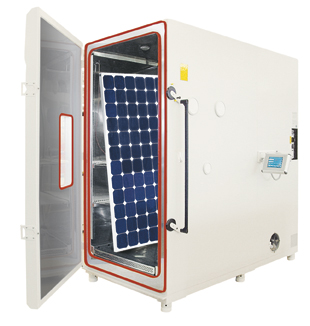PID Prevention
PID: what is it?
What is the temperature coefficient of a solar module?
Mechanical Load Test: conduction and specification
PV Insulation Resistance Test: what is it and why perform it?
UV Preconditioning Test: set up and purpose
Hail Impact Test: hail and solar panels
Damp Heat Test: testing set up and purpose
[...]

 Damp Heat Test machine, source: schunk-group.com[/caption]
Damp Heat Test machine, source: schunk-group.com[/caption]
Essa
on 29 Nov 2018Mahesh
on 13 Apr 2017